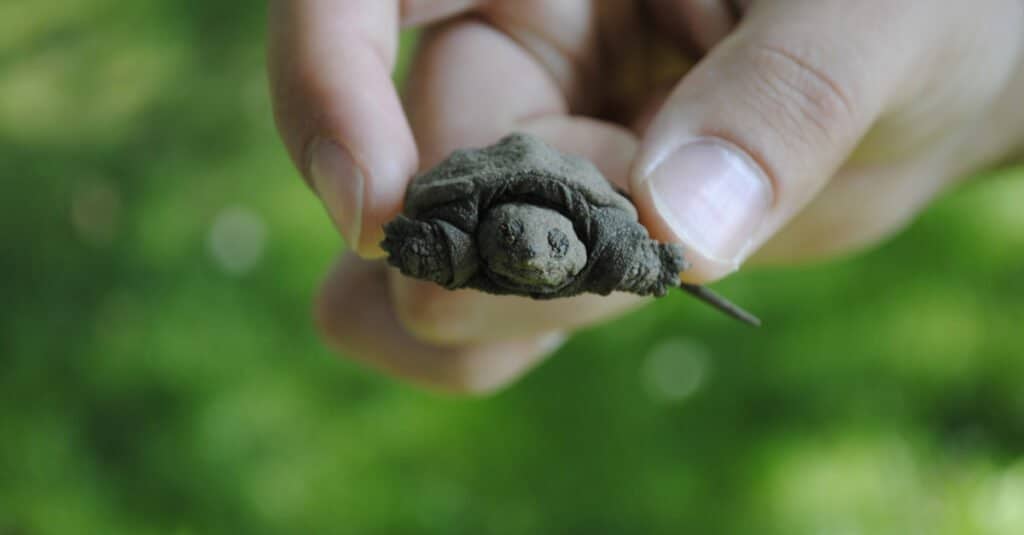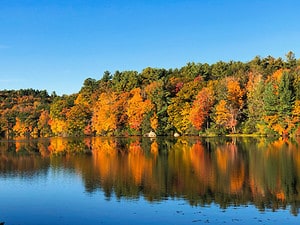Snowstorms are to be expected in most temperate climates. Summers can be blisteringly hot, but winters can be bitterly cold. Along with the cold sometimes comes a great deal of snow.
Kentucky mostly has a humid subtropical climate, with some parts of the state having an oceanic climate because of the nearby Appalachian Mountains. Temperatures range between 87°F in the summer and 23°F in the winter.
In the northern hemisphere, April is part of the spring season. However, it is common for snowstorms to occur in April. What was the biggest April snowstorm to hit Kentucky? Read on to find out!
The Biggest April Snowstorm in Kentucky History

The snowstorm on April 2-5, 1987 was the biggest ever recorded in Kentucky history.
©Anne Kitzman/Shutterstock.com
The snowstorm on April 2-5, 1987 was the biggest ever recorded in Kentucky history. Drifts of as much as 10 feet were reported in Letcher County.
The snow started in Eastern Kentucky on the morning of April 2. Snowfall was light throughout the day, until the evening. Before the storm started, there were only one to two inches of snow that had accumulated on the ground. By the following day, there were four inches of snow, and the heavy snow was continuing.
By the evening of April 3, there were 7 to 18 inches of snow in various parts of Kentucky. There was more snow close to the Virginia border. From the afternoon of April 4 to the morning of April 5, there was another episode of heavy snowfall. By noon on April 5, southeast Kentucky was covered in one to three feet of snow.
Pike and Letcher Counties saw the largest amounts of snow on the ground. The snow impacted both Kentucky and Virginia, with North Fork and Wise Counties in Virginia recording more than two feet of snow. This was not only the biggest April snowstorm to hit Kentucky but one of the biggest April snowstorms to hit the United States!
Impact of the Snowstorm
Just one day into the storm, on April 3, the storm had made Southeast Kentucky fairly unable to function. Power lines were broken, meaning that over 18,000 residents were without electricity.
Many people were also without heat, necessitating the setup of emergency shelters. The roads were dangerous, and people couldn’t even drive in some places because of trees that had fallen across the roads.
Typical April Weather in Kentucky

Looking at the entire state as a whole, the average high is about 64°F, and the average low is about 46°F.
©iStock.com/Ivelin Denev
Climate varies significantly throughout the state of Kentucky. Northern Kentucky is, on average, approximately 5°F cooler than western Kentucky. To show one example of this variation throughout the state, Ashland has an average high temperature of 68°F and average low of 37°F, while the average high and low in Louisville are 68.8°F and 47.3°F, respectively.
Looking at the entire state as a whole, the average high is about 64°F, and the average low is about 46°F. There is approximately 3.66 inches of rainfall on average, making April the second rainiest month of the year.
Precipitation is relatively very high in April, and people in Kentucky can expect up to eight days of rain. A few days of snow in April are to be expected as well. Snowstorms are rare during this time of year, but they can happen.
When Is the Earliest It Has Ever Snowed in Kentucky?
It is fairly rare for snowfall to occur in Kentucky before November. Historically, the earliest it has snowed has typically been in the cities of Lexington and Louisville, which have experienced snow in early October. Bowling Green has seen snow in mid-October.
October 3, 1980 was the earliest it has ever snowed in Louisville going into the winter season. It was mostly sleet with some light snow.
How Do Late-Season Snowstorms Impact Wildlife in Kentucky?
Major snowstorms are fairly rare in the month of April in Kentucky. Local animals have certain behaviors that they use to cope with severe cold and precipitation in the winter. When this winter weather comes later in the year, they may have to reprise these behaviors.
The following are some examples of animals in Kentucky that may noticeably respond to a late-season snowstorm.
Elk

Elk tend to stay underneath dense groupings of trees. The trees catch the snow before it hits the ground and shields the animal from it.
©Bradley Wakoff/Shutterstock.com
Elk typically deal with very low temperatures by shedding their summer coats and replacing them with a much thicker winter coat. However, during an unexpected bout of late-season winter weather, they won’t get the chance to do this and will have to resort to other winter survival strategies.
They may still have remnants of their winter coat from the previous winter, which can be helpful.
Elk also tend to stay underneath dense groupings of trees. The trees catch the snow before it hits the ground and shields the animal from it. They will also migrate towards south- and southwest-facing slopes, which tend to have less snow.
Elk are also fairly well-equipped naturally to deal with cold temperatures. They are ruminants, as are other members of the deer family. The rumen allows the elk to digest plant matter, and this process generates quite a bit of heat.
Great Blue Heron

In the case of a late-season snowstorm, a heron would likely be able to easily adapt by adjusting its diet.
©Joseph Scott Photography/Shutterstock.com
Great blue herons are large birds that have a presence in Kentucky all year. In some regions of the United States, they migrate south for the winter. However, the ones that stay in Kentucky will just search for food and open water in the area.
Because they have such a large repertoire of foods that they can eat, they can adapt to many types of environments, including cold winter temperatures. They can stand over tiny holes in iced-over rivers, waiting for fish to catch. When they are not able to catch fish, they can instead hunt for snakes, reptiles, rodents, insects, and more.
In the case of a late-season snowstorm, a heron would likely be able to easily adapt by adjusting its diet. The heron would likely simply temporarily resume its winter habits.
Snapping Turtle

These turtles basically hibernate under the ice.
©JessKay/Shutterstock.com
Snapping turtles, which can weigh up to 50 pounds and be a whopping three feet long, can also handle Kentucky winters through unique survival strategies. They live close to the Ohio River and streams in the area.
These turtles basically hibernate under the ice. They are able to shut down their metabolism in order to conserve energy, which happens at freezing point.
Because they have very little access to oxygen under the water, they need to conserve oxygen. They are also able to minimize the acidity of lactic acid in the bodies and regulate concentration of calcium and potassium ions in their blood.
The photo featured at the top of this post is © Danita Delimont/Shutterstock.com
Thank you for reading! Have some feedback for us? Contact the AZ Animals editorial team.






